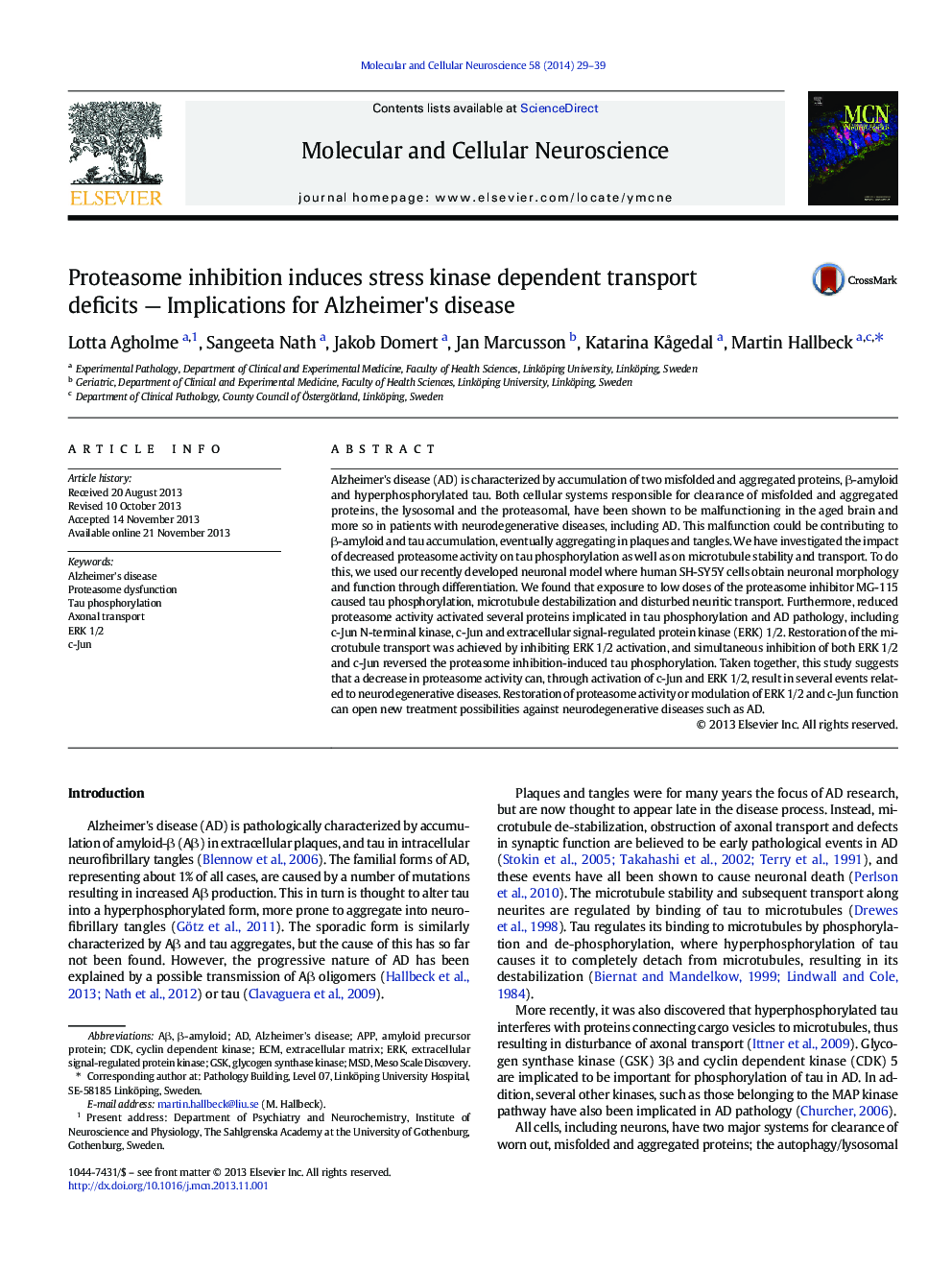| Article ID | Journal | Published Year | Pages | File Type |
|---|---|---|---|---|
| 2198490 | Molecular and Cellular Neuroscience | 2014 | 11 Pages |
Alzheimer's disease (AD) is characterized by accumulation of two misfolded and aggregated proteins, β-amyloid and hyperphosphorylated tau. Both cellular systems responsible for clearance of misfolded and aggregated proteins, the lysosomal and the proteasomal, have been shown to be malfunctioning in the aged brain and more so in patients with neurodegenerative diseases, including AD. This malfunction could be contributing to β-amyloid and tau accumulation, eventually aggregating in plaques and tangles. We have investigated the impact of decreased proteasome activity on tau phosphorylation as well as on microtubule stability and transport. To do this, we used our recently developed neuronal model where human SH-SY5Y cells obtain neuronal morphology and function through differentiation. We found that exposure to low doses of the proteasome inhibitor MG-115 caused tau phosphorylation, microtubule destabilization and disturbed neuritic transport. Furthermore, reduced proteasome activity activated several proteins implicated in tau phosphorylation and AD pathology, including c-Jun N-terminal kinase, c-Jun and extracellular signal-regulated protein kinase (ERK) 1/2. Restoration of the microtubule transport was achieved by inhibiting ERK 1/2 activation, and simultaneous inhibition of both ERK 1/2 and c-Jun reversed the proteasome inhibition-induced tau phosphorylation. Taken together, this study suggests that a decrease in proteasome activity can, through activation of c-Jun and ERK 1/2, result in several events related to neurodegenerative diseases. Restoration of proteasome activity or modulation of ERK 1/2 and c-Jun function can open new treatment possibilities against neurodegenerative diseases such as AD.
